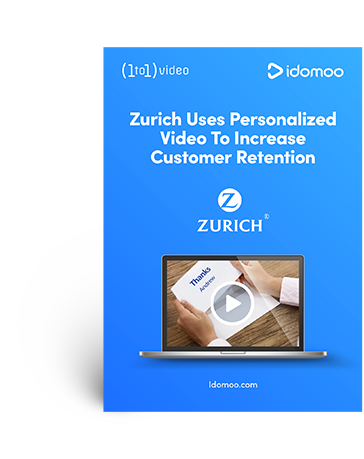Picture this: A customer who has been with your company for years suddenly decides to leave. Ouch. That’s what we call churn, my friends, and it can hit a company where it hurts the most — right in the bottom line.
Also referred to as customer attrition, churn is the all-too-common scenario where clients discontinue their relationship with a company. Churn rate, then, is the rate at which you are losing customers within a given time frame.
Having too high of a churn rate often translates to lost opportunities, missed revenue and a dwindling customer base. Fortunately, with customer churn prediction, you can tilt the odds in your favor. It’s like having a crystal ball that reveals potential flight risks before they even pack their bags, allowing you to take proactive measures and keep your customers onboard.
In this blog, we’ll focus specifically on churn prediction in financial services, an industry that’s particularly seen concerning changes in loyalty with the rise of fintech competition. We’ll zoom in on the unique challenges and opportunities surrounding churn in the financial services field and then arm you with tips and tricks for revolutionizing your customer retention game.
But before we dive into the nitty-gritty, let’s lay the groundwork by understanding the basics of churn prediction methods.
Understanding Churn Prediction Methods
Reducing churn is not only cost-effective but also essential for sustainable growth and profitability. To achieve this, organizations have to proactively identify customers with a high risk of churning. This is where customer churn prediction methods come into play.
Post on
Churn prediction involves using data and analytics to forecast which customers are likely to leave. With the advent of big data and sophisticated analytical tools, businesses can now employ various algorithms and machine learning models to analyze large volumes of customer data points, uncover insights and predict future behavior.
Some commonly used churn prediction models include logistic regression, decision trees, naive Bayes algorithm, support vector machines and random forests. These churn models can be used to analyze different data sources, such as information from CRM, billing and marketing, to identify patterns that indicate potential churn.
Each model has different strengths and limitations so model performance will depend on the data types you’re analyzing, your business model and your metrics for success. It goes without saying, then, that having a data scientist well-versed in predictive analytics on your team, as well as a robust data management strategy, is invaluable to your churn prediction efforts.
With the ability to identify at-risk customers in advance, you can then design personalized retention strategies to address their specific needs and concerns. This targeted approach allows you to deliver relevant and timely interventions, enhancing the overall customer experience and increasing the likelihood of customer retention.
Churn Prediction in Financial Services
Businesses across industries can leverage data science and machine learning algorithms to identify potential churners. But while these strategies can be widely applicable, it’s also crucial to be aware of the unique challenges and considerations that arise when applying churn prediction in the financial services sector.
To predict churn in financial services, it’s essential to look at specific datasets and variables unique to this industry. Financial institutions often possess a wealth of historical data, including transaction logs, account balances, credit scores and demographic information. Through effective data analysis, you can uncover insights into customer behavior and churn indicators.
However, it’s essential to approach churn prediction in financial services with careful consideration for compliance and privacy concerns. The financial industry is governed by strict regulations to protect customer data and ensure confidentiality and compliance.
Data privacy regulations dictate how customer information can be collected, stored and used. To keep in line with these regulations, organizations must adopt data security practices and ensure that customer privacy is safeguarded, particularly in the data preparation step of the churn prediction process.
Respecting customer privacy and securing their trust is essential in the financial services industry, perhaps more than in any other industry. Though adhering to these regulations while harnessing data for churn prediction will certainly be a balancing act, it’s worth the effort.
Addressing Pain Points: A Strategy for Retaining Customers
Churn prediction can provide valuable insights but it’s also equally important to turn those insights into action by developing a comprehensive strategy for retaining customers. And at the heart of any successful churn prevention strategy lies the ability to address the pain points that drive customers away.
Financial services have all kinds of pain points that can contribute to customer dissatisfaction and churn. Complex fee structures, confusing policies, lengthy onboarding processes and lack of personalized interactions are just a few examples of the frustrations customers encounter.
Proactivity is key. Financial institutions need to step up their game and actively reach out to customers to understand their concerns, needs and preferences. Instead of waiting for customers to reach out with their problems, financial service providers should take the initiative in addressing potential issues before they escalate.
Clear communication is equally vital. Customers crave transparency and simplicity in their interactions with financial service providers. From explaining complex terms and conditions in plain language to ensuring customers are aware of policy changes, clear communication not only fosters trust but also reduces the likelihood of churn.
But how can financial institutions deliver personalized and clear communication at scale and in real-time? This is where the power of personalized content comes into play. Tailoring messages, offers and experiences to address specific pain points can significantly boost customer satisfaction and enhance their overall experience.
As McKinsey found, personalization directly influences buying behavior across the customer lifecycle, from prompting them to make that first purchase to driving repeat engagement and loyalty over time. The study reported that:
- 76% of consumers are more likely to consider purchasing from brands that personalize.
- 78% are more likely to make repeat purchases from brands that personalize.
- 78% are more likely to refer friends and family to companies that personalize.
Personalized content can help customers feel understood and valued, ultimately ensuring that their particular pain point is addressed and strengthening their connection with your company.
So, how do you put that into action? Keep on reading to see how forward-thinking businesses have revolutionized their churn-prevention efforts.
Clear Communications in Action
We’ve emphasized how clear and personalized communication with your customers can greatly impact churn, but what does that actually look like?
A prime example of this approach is the use of Personalized Videos, which have proven to be highly engaging and effective in various financial contexts. From traditional credit unions to newer fintech brands, companies across the industry are seeing the benefits of adding a personal touch to communications with their growing number of customers.
For instance, customer onboarding often presents a prime opportunity to nip any potential issues in the bud. It’s a chance to set new customers up for success and address concerns before they become cause for trouble. Unfortunately, when onboarding comes in the form of mind-numbingly boring text or confusing jargon, it may end up being a source of friction instead.
The solution? Be human. If you can’t do in-person (which most banks can’t as it’s not scalable), make your digital onboarding just as personal.
Video adds a human touch by leveraging audiovisual communication — how our brains are hardwired to process information — to make it easier to digest. With a thorough explanation made through text, visuals and audio, your clients are more likely to understand and remember the important facts they need for a smooth experience with your service.
This video below by JPMorgan Chase is a perfect example of how you can elevate the onboarding experience while still clearly communicating the essential details your customer needs for a stress-free start.
Bonus: Proactively answering commonly asked questions upfront through an onboarding video can also help reduce support calls. This frees up time for your customer success team to focus on solving more serious issues that require their attention.
Videos that are personalized, such as the one above, are even better at explaining complicated details like those that relate to our finances. Consumers are 3x more likely to prefer Personalized Video to generic video when a brand has complex information to communicate.
Transparent communication is also essential when you’re letting customers know about any upcoming changes, whether that’s a pricing change, a company-wide update or an economic development that will impact their experience.
While the type of changes you’ll want to address will depend on your specific business and client base (hint: that’s what churn prediction is for!), getting ahead of potential backlash or confusion over a new change should be a strategy that all brands adopt.
Watch how Mercer notified and broke down the news of a pension increase exchange option that had become available to their clients.
As a final example, let’s talk renewals. If there’s ever a moment where you undoubtedly want to positively engage with a customer, it’s when they’re deciding whether to stay on as a customer or, well, churn.
Again, being clear and transparent here is a must. You don’t want to blindside them with an automatic renewal or a sudden end in service. Give them ample time to prepare and plenty of helpful information on what they can expect in the future. You can even throw in a few incentives for them to stick with you!
Most importantly, though, this is an opportunity for you to emphasize how much you appreciate them as a customer, as well as remind them of the value that your services add. This means taking what you know about them as an individual client and using it to add relevancy and a human touch to your renewal message.
Zurich does just that by delivering relevant, personalized renewal information before customers need to renew their insurance policy.
Note that the examples above are just some of the countless use cases for personalized communication and video. By elevating communications with dynamic content that speaks directly to customers’ needs, financial service providers can significantly enhance the customer experience and mitigate churn risk.
Predict and Offset Churn
In today’s fiercely competitive financial services landscape, predicting and preventing customer churn is crucial for success. Luckily, data-driven video provides a scalable way to engage customers, improve CX and, ultimately, reduce churn.
By delivering tailored messages that resonate with each individual, banks, mortgage providers and others can foster stronger relationships that increase customer loyalty.
It’s not just talk. Our clients have seen real results with retention, including:
- 37% reduction in 90-day churn
- 85% renewal rate
- +31 points on their net promoter score
So if you’re looking to revolutionize your customer communication and churn reduction strategies, let’s chat. We’ll show you firsthand how Idomoo’s Next Generation Video Platform can help you connect with your customers like never before. Want to see a demo? Get in touch.





